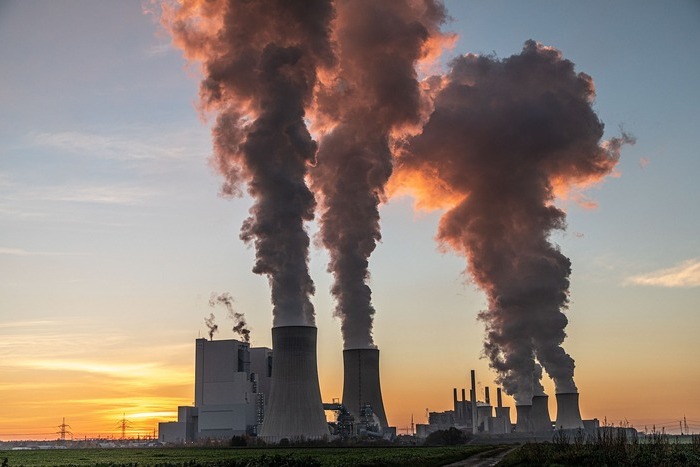The environment ministry again extended the SO2 compliance deadline for coal-based power plants located within 10 km of the National Capital Region or cities with over one million population from December 2024 to December 2027, ET reported.
Plants in critically polluted or non-attainment areas will now be assessed on a case-by-case basis, while those located elsewhere have been fully exempted, provided they meet stack height criteria. Of around 600 thermal power units in India, 462 are Category C units and 72 are Category B units.
Studies by institutions such as NEERI, NIAS and IIT Delhi were being “selectively used to justify inaction” by power plants across the country, which continue to delay the installation of flue gas desulphurisation (FGD) units to control SO2 emissions, PTI reported.
India established stringent sulphur dioxide emission standards for coal-based power plants in December 2015, requiring compliance within two years. Even after multiple extensions, 92% of coal-fired power plants have not yet installed flue gas desulphurization units to control SO2 emissions, a major air pollutant that converts into fine particulate matter (PM2.5) and causes a range of diseases.
NGT notice to Centre and Gujarat pollution board on issue of disappearing lakes
The National Green Tribunal (NGT) issued notices to the Central Pollution Control Board (CPCB), the Gujarat Pollution Control Board (GPCB) and the District Magistrate of Ahmedabad over the issue of disappearance of lakes flagged by Ahmedabad Municipal Corporation (AMC), IE reported.
The court registered a suo motu case on the basis of The Indian Express report that cited Ahmedabad Municipal Corporation stating that 37 of 172 water bodies in the city have vanished. According to the report, these water bodies vanished primarily because they were not recognised in the statutory development plan, which allowed for their encroachment and conversion.
CPCB report confirms illegal mining around Ganga river in Dehradun
A Central Pollution Control Board (CPCB) report to Uttarakhand High Court confirmed the prevalence of illegal mining around the Ganga river (from Raiwala to Bhogpur in Dehradun), reported DTE. NGO Matri Sadana alerted the court with photographic evidence and eyewitness testimonies of indiscriminate mechanised mining. The inspection report found mining activities at only 501 m and 802 m from the Ganga. The Consent To Operate certificate expired in March 2022, and the mines lacked proper green belts and dust control measures.
In some areas where the Ganga meets its tributary Ravasan, the report found mines to depths up to 2.2 m, exceeding the permissible limit of 1.5 m.
The petitioners said CPCB report did not include comparative data or analysis showing the extent of environmental damage from illegal mining or the impact on local communities, including the devastation of farmland which was visible in satellite images. Matri Sadan has now requested a reinspection under direct supervision of the court.
Industrial pollution: Green court serves notice to Haraya and central pollution control bodies
Two years after a petition raised alarm over 21 industrial units operating in the region, the National Green Tribunal (NGT) issued notices over alleged regulatory lapses and categorisation concerns in Panipat’s Madlauda industrial area, TOI reported.
The notices follow a petition by a resident of Sutana village in Panipat. The pollution boards have been asked to submit relevant documents and take appropriate steps. The matter is listed for hearing on October 15. The NGTl issued notices to to Haryana State Pollution Control Board (HSPCB) and Central Pollution Control Board (CPCB) over the issue of industrial units — involved in the manufacture of textiles, chemicals, pesticides and cement — engaged in hazardous activities without sufficient regulatory oversight or pollution control compliance.
Elon Musk’s xAI get green signal to instal polluting methane gas generators near black neighborhoods
Elon Musk’s artificial intelligence company xAI was granted a permit to run methane gas generators at its massive datacenter in Memphis, Tennessee, from the county health department. This has sparked outcry from the local community and environmental leaders, who said the generators pollute their neighborhoods, the Guardian reported.
Musk’s xAI set up its massive datacenter in Memphis roughly a year ago. To supplement the facility’s heavy power usage, the company brought in dozens of portable methane gas generators. xAI did not have a permit for the generators, but seemed to have found a loophole in the system that allowed it to use the turbines as long as they were not in the same location for more than 364 days, the newspaper reported.
The pollution’s proximity to Black neighborhoods has caught the attention of the NAACP civil rights group. It has initiated a lawsuit against xAI alleging the company is violating the Clean Air Act by illegally installing and operating the methane gas generators.
About The Author
You may also like
Govt Says No Conclusive Data Relating Deaths to Pollution
Parents, Activists Protests at India Gate as Air Turns Toxic
Top court allows ‘green firecrackers’ in Delhi on Diwali with conditions
CPCB should help industry meet green norms: Environment Minister
Noise pollution from trains hit surrounding homes, exceed limits by 85%

